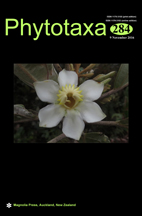Abstract
The steppe morel, Morchella steppicola, is one of the more iconic species of true morels (Morchellaceae, Pezizales) based on its: 1) distinctive cerebriform pileus with densely packed labyrinthine irregular ridges, 2) genealogically exclusive position as the earliest diverging species lineage within the Esculenta clade, and 3) geographic distribution within temperate grassland steppes in central Eurasia. Given the uniqueness of this species, and conservation efforts in some Eurasian countries to protect it, we sought to study the holotype in the Mycological Herbarium of the M. G. Kholodny Institute of Botany (KW), Kyiv, Ukraine. However, because the type specimen appears to have been lost, but a picture was provided with the description, we have designated it the lectotype and epitypified this important species based on a collection made in 2014 from Lugansk province, Ukraine. Herein, we provide a detailed morphological description, provide a preliminary assessment of intraspecific diversity via phylogenetic analysis of ITS rDNA sequences from 13 M. steppicola collections spanning six Eurasian countries, and map its geographic distribution across the terrestrial ecoregions of central Eurasia.

